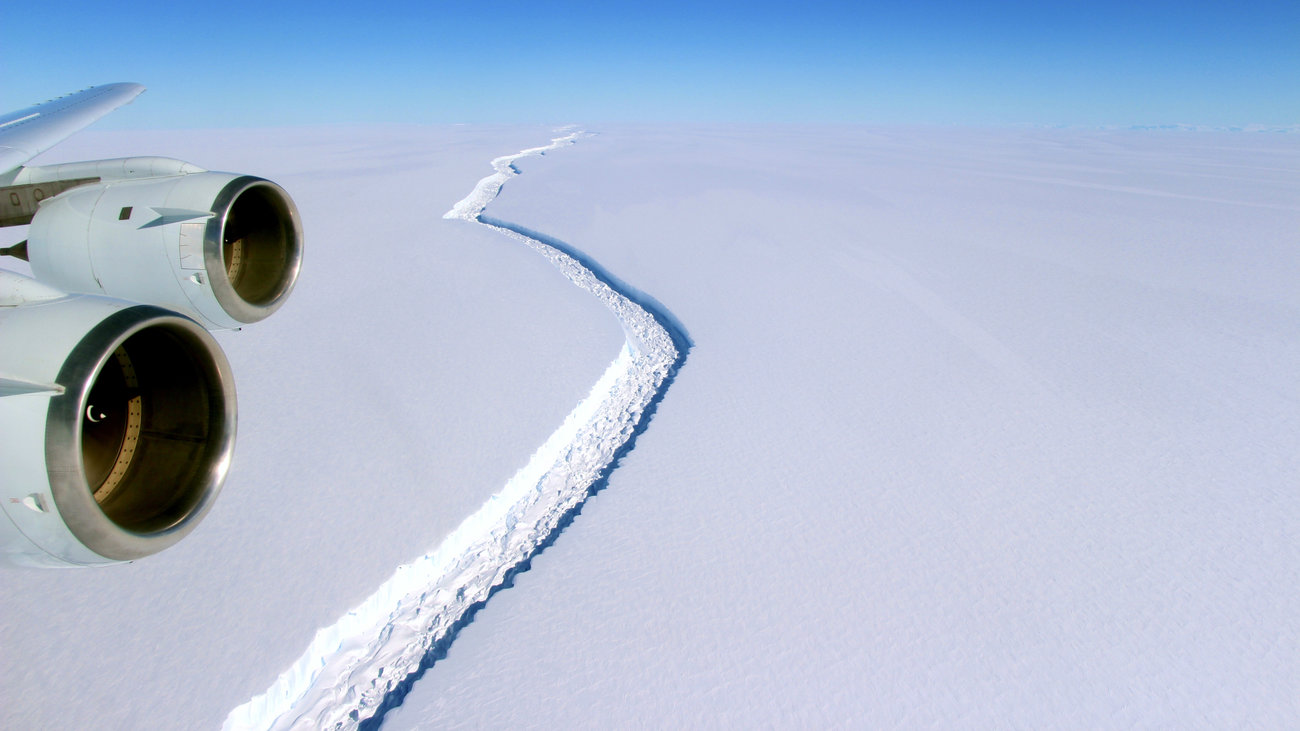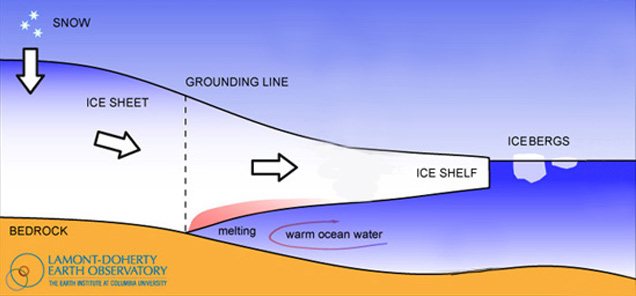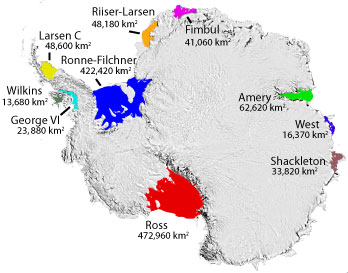 An enormous crack, the size of a football field, has formed in an Antarctic ice shelf!
An enormous crack, the size of a football field, has formed in an Antarctic ice shelf!
This crack has formed in Larsen C, an ice shelf drifting off the Antarctic Peninsula. The crack was first reported in December, and according to British researchers, only 12 miles of ice now connects this ice shelf to the mainland.
When this crack eventually spreads across the entire ice shelf, it will form a massive iceberg approximately the size of Delaware, NASA scientists say.
Antarctica's Ice Shelves
Antarctica is the Earth’s southernmost continent, which contains the South Pole. It is the coldest, driest continent on Earth.
There are 44 ice shelves in Antarctica. The Larsen Ice Shelf is a long ice shelf and is divided into three parts. It floats along the northwest of Weddell Sea and continues along the coast of the Antarctic Peninsula. The Ice Shelf was named after Captain Carl Anton Larsen, a Norwegian Antarctic explorer. Larsen C is the southern most part of the ice shelf.
Ice shelves are thick, floating platforms of ice that are connected to a landmass. They are found in Antarctica, Canada, Greenland, and the Russian Arctic. Usually found along coastlines, these ice shelves form when freezing cold water flows into the sea from glaciers and ice streams. If the ocean water is extremely cold, the water that flows into it does not melt very quickly and will most likely float on the surface. Some ice shelves could continue to get larger if water from the attached glaciers keeps flowing into them.

How Do Ice Shelves Crack? What Are The Concerns?
Ice shelves do crack naturally, but it is a much slower process. It takes months to years for a small crack to spread into a large one. The recent ice shelf cracks that have occurred are taking place in about a week!

Scientists believe that climate change is causing the ice to melt, which is speeding up the natural cracking process. When warm air melts the top layer of an ice shelf, it forms pools of water. This water seeps through the tiny cracks in the ice and deepens and enlarges the cracks, causing the process to speed up.
Researchers and scientists believe that the rapid cracking of ice shelves is not only further evidence of climate change but also a warning sign that there will be major flooding issues in the future. It has been predicted that in the next 100 years, the entire West Antarctic Ice Sheet will melt and collapse, sending enough water into the sea to increase the sea level by almost 10 feet. If this does happen, it will lead to major floods in coastal cities, which will impact thousands of people, if not millions.
In the near future, when the ice shelf breaks off to form a freely floating iceberg, it will directly raise sea levels by one-sixteenth of an inch.








